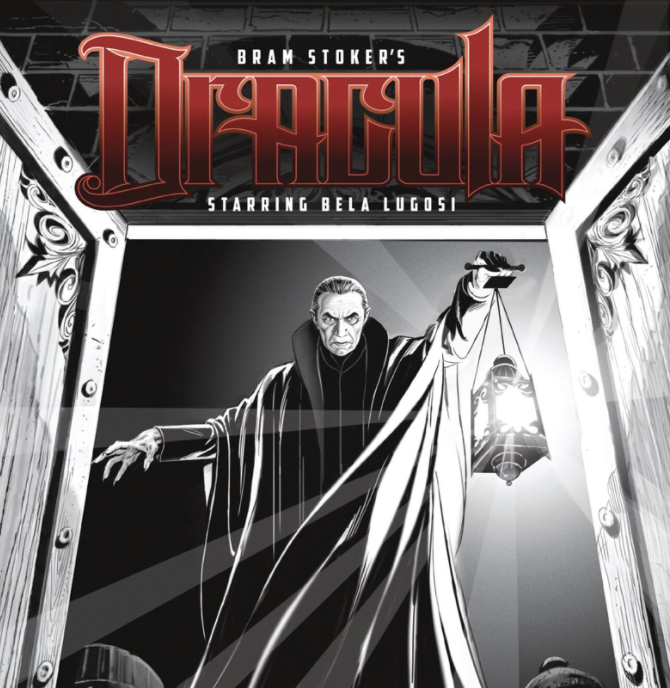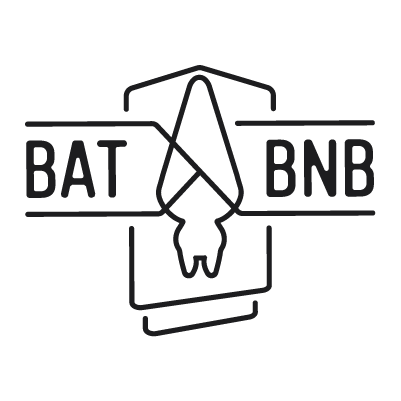Eerie History: How Did Bats Become a Halloween Mascot?
February 17 2022 – Harrison Broadhurst
The creepy season is upon us, which means there’s some extra attention paid to an often misrepresented and misunderstood Halloween mascot– bats. When we think about Halloween, the first things that usually come to mind are pumpkins, witches, black cats, vampires, and of course, bats.
All of these things encapsulate the frightening feeling of Halloween and fill us with a sense of eerie mysticism that can only be found in the brisk autumn air of October.

But how did bats become synonymous with Halloween? Why were they chosen as the animal counterpart to vampires? What was the catalyst that made them an eldritch symbol of the occult? Let’s take a deep dive into the history of bats and their relationship with vampires, Halloween, and all things creepy.
A SHORT HISTORY OF HALLOWEEN AND ITS CREEPY CRITTERS
The Halloween we know now is a holiday where people dress up in costumes, eat candy, and watch scary movies––but its roots are actually ancient and much darker in origin. Halloween is of Pagan origin and is believed to have been evolved from an ancient Celtic religious festival called Samhain.
Samhain was celebrated from October 31st to November 1st and was a spiritual ceremony that welcomed the transition from deep autumn into the winter season, or as they called it, “the dark half of the year.” During this transition, the ancient Celts believed that the veil between worlds became thinner. Spirits, demons, and monsters were believed to be more easily able to walk between the dimensions of the dead and the living, associating this time with the feelings of darkness and evilness. They dressed up in ceremonial costumes, spun wheels of fire in the air, and participated in ritualistic animal sacrifices to appease the spirits and bring them good fortune for the months to come.
While the celebration of Samhain didn’t have anything to do with bats per se, it was a celebration of the world turning “darker”––as in, the days were becoming shorter and the nights were becoming longer. This meant that the Earth’s nocturnal creatures had more time to come out and play––and that, of course, includes bats. Since most of these preternatural events seem to occur at, or revolve around night time, it’s safe to assume that nocturnal animals, or “creatures of the night”, became associated with things that are considered creepy, scary or evil.

Other rituals from the Samhain festival that have carried on into modern Halloween include carving Jack-o-lanterns (originally made out of radishes) and trick or treating (or as it was, collecting offerings). As centuries passed and other religions such as Christianity and Wicca rose in popularity, these traditions followed the evolution of the holiday from the Samhain festival to All Saints Day, then to All Hallow’s Eve, and finally, to Halloween. In the 1920’s and 30’s, vampires began to rise into popular culture due to Bram Stoke’s 1897 novel, “Dracula” which spawned over 200 vampire movies. As the more popular and infamously feared vampires became, the same unfortunately happened for bats.
VAMPIRES, BATS, AND VAMPIRE BATS
The most notorious cultural association bats have are with the blood-sucking undead, the fanged and immortal creatures that make up scary-tales and ghost stories around the world: vampires. Depictions of vampires go back hundreds of years and are closely tied with old Slavic and European folklore. Before science could explain how certain diseases were spread and what exactly happens to humans post-mortem, it was believed that some people became possessed after death and would rise again to feed on the blood of the living and spread deadly diseases. Some believed they would recruit other corpses to do their bidding––thus giving us the undead, blood-sucking, and murderous tropes we see in depictions of vampires today.
So what came first––the vampire, or the vampire bat? While bats have obviously been around much longer than the concept of vampires, these three species of bats were actually named after the monster. Since a few bats have been known to feed on the blood of their prey, people began to associate the living dead with these inconspicuous creatures.
Vampire bats aptly got their name from their feeding habits, which are to prey on the blood of animals such as cows, sheep, pigs, horses, and chickens. (Mostly, they’re a nuisance to those who own a lot of livestock.) Contrary to popular belief, vampire bats don’t actually suck the blood––they create small slits in the skin of their prey and lap up the blood, similar to a cat drinking milk. An anticoagulant in their saliva keeps the blood from clotting so they can continue to drink until they are satisfied. This special anticoagulant formula that vampire bats produce is now being used in the medical field to help stroke victims recover.

Another common myth about vampire bats is that they reside in and terrorize the residents of Europe, where places like Transylvania and Romania have claimed their vampiric heritage. In fact, no vampire bats live in Europe, North America, Asia, Africa, Australia at all. Surprisingly, they only live in a very small section of the world––all three species of vampire bats can exclusively be found in parts of Central and South America.
There are three species of Vampire bats––the Common Vampire Bat (Desmodus rotundus), the Hairy-Legged Vampire Bat (Diphylla ecaudata), and the White-Winged Vampire Bat (Diaemus youngi). While their reputation is certainly the most infamous, Vampire bats make up less than 0.1% of the roughly 1400 known species of bats on Earth.

MISUNDERSTOOD DOES NOT MEAN SCARY
Even though bats have long been associated with the creepy and eerie vibes of Halloween, it’s important that we understand that misunderstood does not equal scary. These associations have oftentimes left bats with a negative and misunderstood reputation which, unfortunately, has proven to be deadly for the species. Many non-vampire species of bats have been persecuted globally due to unfounded fears rooted in misinformation.
While vampire tales and Halloween horror movies have depicted bats as the evil blood-sucking animal familiar of the undead, in real life there have been an incredibly low number of instances where bats have preyed on the blood of humans. In fact, it almost never happens.
On the very rare occasion it does happen, the bats usually mistake a human (oftentimes a sleeping human) for a different warm-blooded creature that they normally feed on. Vampire bats do not actively seek out humans for food, and those who are highest at risk are those who sleep outside or in huts with open windows in areas where vampire bats are commonly found. Even when these uncommon instances occur, it is rarely fatal. Any fatalities have been caused by rabies which is a disease that is not exclusive to bats.
We must remember bats are not just the subject of fantasy; they are very real animals that have very real and important roles in our ecosystem. In fact, all 1400 species of bats (minus the three species of vampire bats) are crucially important for us. 70% of bats can consume their body weight in pest insects every night while microbats can consume up to 1,000 mosquito-sized insects in a single night. Other species are responsible for pollinating crops and dispersing seeds. We would not have macadamia nuts, cashews, figs, peaches, bananas, cacao, durian, or tequila crops if not for bats. In fact, roughly 70% of all wild-grown tropical fruits are pollinated and have their seeds spread by bats.
Bats are not an animal we must fear––they are an animal we must protect, respect, and admire from afar. Educating others on why bats are not something to be scared of is an essential part of their protection and conservation.
According to folklore, a vampire can not enter your home without being invited––and very similar to their vampiric counterparts, bats also avoid entering homes, especially if a better option is nearby. If you’re a Halloween lover, a bat-enthusiast, or just someone who wants to make a positive impact on the environment, you can go a step further in ensuring the safety and protection of these animals by adding a BatBnB to your property. Adding a high-quality bat house to your home is a wonderful way to provide them shelter while peacefully coexisting with these misunderstood creatures that are so incredibly important to our environment––both inside and outside of spooky season.

For more information about bat houses and conservation, visit batbnb.com.
Image 1: Photo by Clément Falize on Unsplash
Image 2: http://www.idlehandsblog.com/2019/10/bela-lugosi-to-star-in-bram-stokers.html
Image 3: Common vampire bat (Desmodus rotundus) feeding on chicken in French Guiana.
Image 4: Photo by Merlin Tuttle of a Hairy-legged vampire bat (Diphylla ecaudata) from Mexico
Image 5: Memamec dual-chambered BatBnB


0 comments